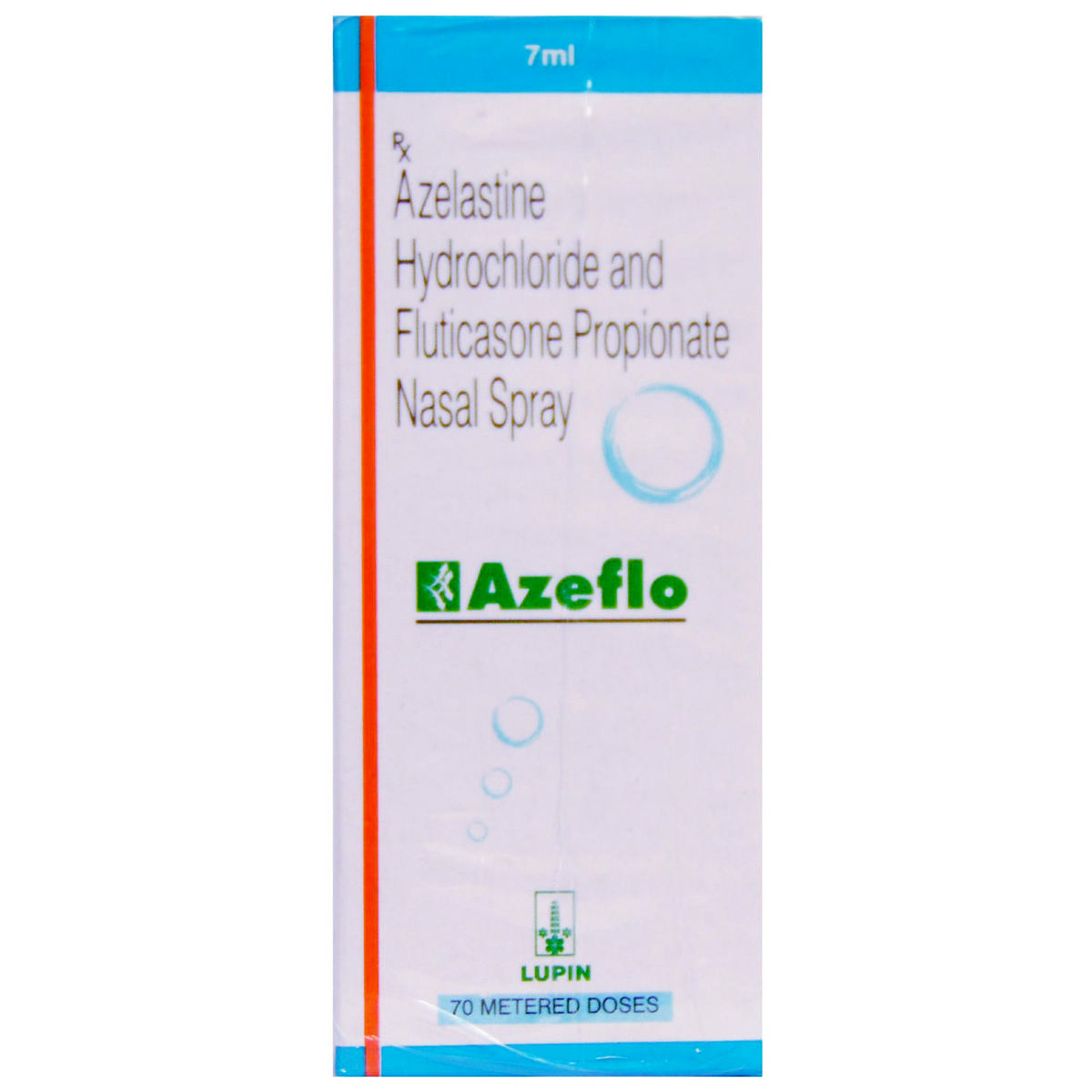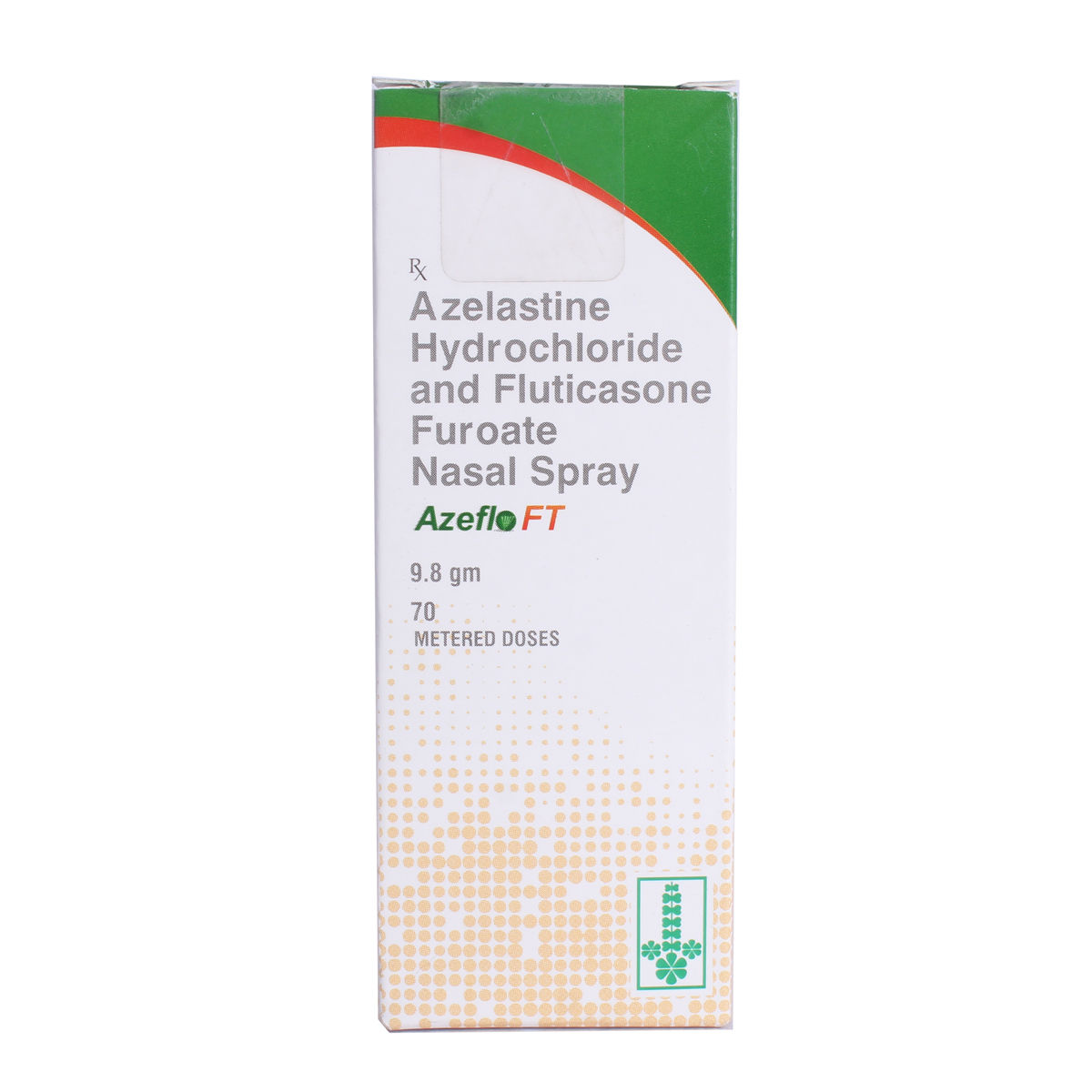Fluticasone+azelastine
About Fluticasone+azelastine
Fluticasone+azelastine belongs to the class of medications called 'antiallergic' primarily used to treat allergic symptoms like sneezing, runny nose, congestion, stuffy nose or watery eyes. An allergy is a condition that occurs when the immune system reacts to a foreign substance. These foreign substances are known as 'allergens.' Allergic condition varies from person to person. Some might be allergic to certain foods and seasonal allergies like hay fever, pollen or pet dander. One of the main symptoms of allergy is cough, which acts as a reflex action in the throat when there is any mucus or foreign irritant entering the respiratory system.
Fluticasone+azelastine is a combination of two drugs: Fluticasone (corticosteroid) and Azelastine (antihistamine/antiallergic). Fluticasone belongs to the class of corticosteroids that works by acting inside the nasal lining cells and stopping the release of certain chemicals in the body that cause inflammatory reactions, thereby relieving sneezing, runny or blocked nose, and sinus discomfort. On the other hand, Azelastine belongs to the class of antihistamines (antiallergic drugs) that works by blocking histamine, a substance responsible for causing allergic reactions. It helps relieve allergy symptoms such as sneezing, running nose, watery eyes, itching, swelling, congestion, or stiffness. Together, both of them effectively treat allergic symptoms.
Take Fluticasone+azelastine as advised by your doctor by spraying towards the sides of nostrils. Your doctor will recommend how often you take Fluticasone+azelastine based on your medical condition. Some people may experience headaches, taste changes or nose bleeds. Most of these side effects of Fluticasone+azelastine do not require medical attention and gradually resolve over time. However, if the side effects persist or worsen, please consult your doctor.
Inform your doctor if you are allergic to Fluticasone+azelastine or any other medicines, are pregnant or breastfeeding before using Fluticasone+azelastine. Fluticasone+azelastine is not recommended for children below six years of age. If you experience vision changes, tiredness, nausea, vomiting, light-headedness, chills, fever, body pains, sores, redness or white patches in the mouth or throat, runny nose, severe nosebleeds, or increased drowsiness, stop taking Fluticasone+azelastine and consult a doctor immediately. Avoid contact with people who have infections or are sick as the Fluticasone+azelastine may weaken the immune system causing infections easily. If you have chickenpox, measles, tuberculosis, surgery or injury on the nose, glaucoma, cataracts, herpes infection of eyes, ulcers, or sores inside the nose, inform your doctor before taking Fluticasone+azelastine.
Uses of Fluticasone+azelastine
Medicinal Benefits
Fluticasone+azelastine is primarily used to treat allergic symptoms like sneezing, runny nose, congestion, stuffy nose or watery eyes. It combines two drugs: Fluticasone (corticosteroid) and Azelastine (antihistamine/antiallergic). Fluticasone belongs to the class of corticosteroids that works by acting inside the nasal lining cells and stopping the release of certain chemicals in the body that cause inflammatory reactions, thereby relieving sneezing, runny or blocked nose and sinus discomfort. On the other hand, Azelastine belongs to the antihistamines class (antiallergic drugs) that works by blocking histamine, a substance responsible for causing allergic reactions. It helps relieve allergy symptoms such as sneezing, running nose, watery eyes, itching, swelling, congestion or stiffness. Together, both of them effectively treat allergic symptoms.
Directions for Use
Storage
Side Effects of Fluticasone+azelastine
- Drowsiness
- Headaches
- Taste changes
- Nose bleeds
Patients Concern
Disease/Condition Glossary
Allergy: Allergy is a condition that occurs when the immune system reacts to a foreign substance. These foreign substances are known as ‘allergens’. Allergic condition varies from person to person. Some might be allergic to certain foods and seasonal allergies like hay fever, pollen or pet dander. One of the main symptoms of allergy is cough, which acts as a reflex action in the throat when mucus or foreign irritant enters the respiratory system.
FAQs
Fluticasone+azelastine is a combination of two drugs: Fluticasone (corticosteroid) and Azelastine (antihistamine/antiallergic). Fluticasone belongs to the class of corticosteroids that works by acting inside the nasal lining cells and stopping the release of certain chemicals in the body that cause inflammatory reactions, thereby relieving sneezing, runny or blocked nose and sinus discomfort. On the other hand, Azelastine belongs to the class of antihistamines (antiallergic drugs) that works by blocking histamine, a substance responsible for causing allergic reactions. It helps relieve allergy symptoms such as sneezing, running nose, watery eyes, itching, swelling, congestion, or stiffness. Together, both of them effectively treat allergic symptoms.
You are recommended to avoid taking grapefruit juice with Fluticasone+azelastine as they may lead to adrenal insufficiency and Cushing’s syndrome (increased level of cortisol hormone in the body).
It may take several days of regular use for your rhinitis symptoms to get better. Call your healthcare provider if your symptoms do not improve or get worse.
You are not recommended to take more than the prescribed dose of Fluticasone+azelastine or for a prolonged time as it may cause adverse effects such as changes in body fat (especially in the back, waist, neck, and face), easy bruising, skin thinning, increased facial hair or acne, loss of interest in sex, impotence or menstrual problems. However, if you experience any of these symptoms while taking Fluticasone+azelastine, please consult a doctor immediately.
No, you are recommended not to use Fluticasone+azelastine if you have a recent nose operation or have any nose infections as it may lead to nose bleeding and excessive pain in the nose, leading to further worsening of your condition. Consult your doctor and do as advised for the best results.
No, Fluticasone+azelastine is not used to treat asthma attacks. Fluticasone+azelastine is used to prevent allergic symptoms that can cause asthma. Therefore, it is recommended to carry a rescue inhaler always to treat asthma attacks.
Fluticasone+azelastine contains Fluticasone which belongs to the class of corticosteroids, and it may result in the development of glaucoma and/or cataracts. Therefore, close monitoring is warranted in patients with a change in vision or a history of increased intraocular pressure, glaucoma, and/or cataracts.








